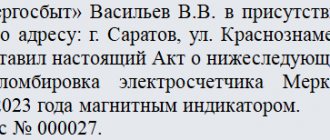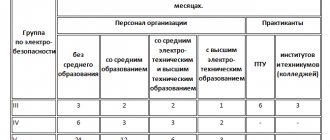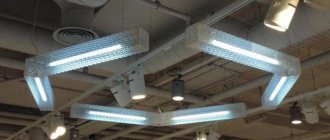What is ODN for electricity?
The easiest way to explain the meaning of this term is with an example. Let's say there is a standard apartment building connected to the power supply. The total expense in this case will include the following components:
- Electricity consumed by individual consumers.
- Electricity necessary to power the equipment of common home areas (lighting of stairwells, elevator equipment, technological losses on internal lines, etc.). This item of expenditure is called “general household needs” or abbreviated as GDN.
Consumption for the first item is determined according to the readings of individual meters. For the second, a special calculation is made, the results of which are reflected in the corresponding column of the utility payment receipt.
Receipt with column ONE electricity
Exceeding standards
In the event that the volumes of electricity supply exceed the established standards, the difference is paid by the utility service provider , represented by the management company, homeowners association or other organization to which the owners have delegated the rights to manage the apartment buildings.
Previously, any expenses, including those exceeding standards, were paid by the owners of residential premises.
In the case where a resource supplying organization is appointed as the provider of public services, the payment of one-time electricity supply in excess of the standards is paid by the owners of residential premises based on the above formulas.
What is included in the ODN?
Residents of apartment buildings, having received a receipt that includes payment for one-time expenses, often wonder what this category of expenses includes. Let us answer this question by providing a drawing for clarity, listing common household appliances.
Equipment included in the ODN
Designations:
- a) Lighting fixtures in staircases, attics and basements.
- b) Lighting systems for local areas.
- c) Elevator equipment.
- d) Security systems (intercoms, video surveillance, etc.).
- e) Fire alarm.
- f) Providers' equipment.
- g) Antenna amplifiers.
- h) Pumping equipment.
- j) Electricity losses.
Please note that the last point includes both losses of the intra-house network and unauthorized connections that bypass individual devices that take into account electricity consumption. That is, in this case we can talk about stealing electricity from neighbors in the house.
What is it - decoding definition
The abbreviation KVS ODN stands for: “Cold Water Supply for General Household Needs.” ODN arise as a result of the need to maintain property belonging to all residents in proper order.
This list:
- the building itself;
- the plot of land he occupies;
- parking;
- the halls, basements, stairs, elevators located in it.
All this, according to Article No. 36 of the Housing Code of the Russian Federation, is called “Common Property”. Article No. 36 of this document defines the ownership rights to those places in the house that are not private, and to the site occupied by the building.
All tenants pay for HVS ODN.
Payment for one day
According to the Decree of the Government of the Russian Federation (No. 354), the entire volume of electricity consumed at the ODN is paid by the residents of the multi-apartment residential building. To avoid any discrepancies, we present a verbatim excerpt from the Resolution.
An example of an excerpt from RF PP No. 354 dated May 6, 2011
As you can see, the Resolution stipulates that all electricity costs for one-way distribution systems are borne by the owners of the residential building, regardless of the chosen form of management. Guided by this Resolution, management companies calculate the volume of electricity consumption for general house needs, the results obtained are entered into utility payment receipts. An example of such a receipt was shown in Figure 1.
How to calculate correctly and calculation procedure
For the calculation you will need the following values:
- Readings from a common household meter.
- Electricity spent in all premises of non-residential apartment buildings.
- Electricity consumed in residential premises where there are no individual metering devices.
- Electricity consumed in residential premises where there are individual devices.
- The area of a separate dwelling.
- The area of all apartments in total.
Experts are confident that the final amount that the user will have to pay largely depends on whether a common building meter is installed in the apartment building or not. In its absence, the calculation is carried out according to old standards, which are significantly higher than the current ones.
Electricity ONE according to metering device
If the residents have taken care to install a common house meter, then the ODN is read by Energonadzor employees together with a representative of the residents, who is selected for this at the general meeting (at the residents’ request, the calculation is carried out by Energonadzor employees without their participation). The calculation is based on the difference between the indicators of the general metering device and the values of all devices installed in individual apartments.
The amount is divided between apartment owners, but not equally, but depending on the occupied space. The larger the property, the more its owner will have to pay for general household needs. The formula for calculating electricity looks like this:
E/e according to ODN = (Value for a common house metering device – E/e value for the maintenance of common household property – Value of meters for all apartments – E/e value calculated according to standards in those apartments where there are no metering devices) * (Area occupied apartments/Area of all apartments in a high-rise building).
If there is no common household metering device, the calculation of electricity for the ODN is based on the value that is valid in a particular region. As a rule, the standard is significantly higher than the actual usage value, which is shown by the general house meter.
If the calculation shows a negative result
This option may occur when the volume according to the common house meter is less than the volume consisting of readings from individual meters.
A situation may arise when some apartments do not have individual metering devices; they pay for electricity according to current standards, while in fact they consume significantly less energy.
The contractor must recalculate the difference, which is divided between the apartment owners. Therefore, if the payer finds a negative value in the receipt for general household needs, then the utility company may have made a recalculation.
For example, the difference between the values of a common household meter and the sum of individual indicators is 130 kW/h. 150 residents are registered in the apartment building. The difference will be calculated as follows: -130/150=-0.87. If two people are registered in an apartment and they consumed 100 kW/h in one month, then the consumed electricity will be reduced by 2.61 kW/h.
An example of calculating ODN for electricity in a multi-storey building
Despite the fact that tariffs and standards for electricity consumption differ in individual regions, the calculation formulas for calculating payments in the corresponding column remain unchanged. Let us give examples of calculations for a multi-apartment residential building with a common building meter for electricity consumption and an object where such a device is not available.
With counter
The calculation mechanism will be as follows:
- Readings are taken for a certain period from a common house electricity consumption meter. Let’s say the collective meter displays consumption of 6,500 kilowatt-hours. In this case, this is the total electricity consumption of a residential building, which includes the total volume of consumption of residential premises and the costs of one-room heating system.
- At this stage, a comparison is made of the total readings taken from individual electricity meters and the data from the common house meter. To perform this operation, it is necessary to sum up the consumption of each apartment. As a rule, data for the reporting period is collected on certain dates of the month. Such restrictions on the reading process are necessary to ensure that large discrepancies in the balance do not arise.
Let’s imagine that the total value of all residents’ electricity meter readings was 5,600 kilowatt-hours. That is, this is an indicator of the amount of electricity consumed by the owners of residential premises.
- Having received the consumption indicator for residential premises, it is subtracted from the total amount of electricity consumed. The result will be the number of kilowatt-hours per unit. In our case, the calculation will be as follows: 6500 – 5600 = 900.
- Now it is necessary to distribute (accrue) the ODN fee among the owners of the premises. Accruals are made to the owner based on the living space (RA) occupied by the apartment owners. For this operation, it is necessary to calculate the ratio between a square meter of housing and a unit of measurement for the resource spent on general house needs (kilowatt-hour for electricity).
Let's return to our example. Let's say the total living area in the house is 4200 m2. Therefore, in order to calculate the ratio, it is necessary to divide the total volume of ODN consumption (in our case 900 kWh) by the total amount of living space (4200 m2), we get: 900/4200 ≈ 0.214 kWh.
- Having calculated the ratio, it is easy to calculate the electricity consumption of one unit for any homeowner in the house. To do this, you need to multiply the resulting coefficient by the living area of a particular apartment. For example, if the owner has 42 m2 of living space, then the calculation of consumption, in our example, will be as follows: 42 * 0.214 = 8.988 kWh. Please note that the area of non-residential premises is not taken into account.
- At the final stage, the ODN fee is calculated; for this, the result obtained is multiplied by the tariff provided for the given region. Let's say our house is located in St. Petersburg, respectively, with a single-rate tariff of 4.32 rubles. for 1 kWh, the payment amount will be as follows: 4.32 * 8.988 ≈ 38.83 rubles.
- Payment is made for the consumption of electricity spent on general needs.
Closing the topic of calculations in the presence of a MOP meter, it should be noted that the weakest link in this accounting system is taking readings from individual devices. This is directly related to the influence of the human factor, for example, information was transmitted with an error or it is not possible to take readings due to the absence of residents. You should also take into account the time required to enter data into the common database and possible operator errors. Automated reading collection systems do not have such shortcomings. It will only take a few minutes to balance the electricity consumed by residents' networks, and 100% accuracy is guaranteed.
Without counter
The above method for calculating the consumption of resources (electricity) on one unit is applicable only if there is a common meter. If there is none, then a special standard provided for a given region is used as the coefficient necessary to calculate the use of electricity. The fee calculation principle is shown below.
Calculation of ODN in the absence of a common house meter
Information on the calculated coefficient (standard) for a specific region can be obtained on the official website of the regional administration. In this case, the coefficient acts as a limiting value; its revision is possible only upward. Such a decision can be made by a general meeting of residents (if we are not mistaken, in practice this has never happened before).
What are the norms by region?
The increasing coefficient is established by the regulatory act of the subject of the federation. Its value depends on the presence of energy-consuming equipment in the building, which includes:
- elevators;
- heating and water pumps;
- barriers in the courtyard area;
- street and interior lighting;
- others.
Some indicators are shown in the table by region:
| Region of residence | Coefficient per square meter, taking into account the type of equipment installed in the structure (kW/h) | ||
| Absent | Elevator | Water pump | |
| Rostov region | 0,6 | 1,7 | 0,9 |
| Saratov region | 0,59 — 2,12 | 2,44 — 2,74 | 0,97 — 2,41 |
| Moscow region | 0,57 — 2,99 | 1,19 — 1,58 | 0,25 — 0,57 |
Attention: the size of the coefficient in a particular region depends on the number of floors of the building.
Which is more profitable with or without a meter?
As an example, let us give the norms of electricity consumption for general household needs for the Nizhny Novgorod region.
ODN consumption standards in Nizhny Novgorod (for example)
If you track thematic information on local forums, it turns out that installing MOS devices is profitable, since in this case you have to pay less for utility resources spent on general needs.
A situation where a common electricity meter is installed, and the volume of consumption of utility resources exceeds the regional norm, is fundamentally impossible. In this case, everything points to the fact of loss of resources due to the fault of the management company.
How to calculate ODNE in MKD using a meter
It is useful to know how to independently calculate the amount of payment for ODN for electricity. To do this, you need to know the area of the house, including utility rooms, the regional tariff and the readings of the common house and individual meters. Another calculation option applies to houses that do not have a common meter.
Without counter
In this case, the formula is used Viodn = Nodn x Soi (Si/Sob), where:
- Nodn – local consumption rate.
- Soi – area (utility).
- Si – apartment area
- Sob – area of the house.
The amount of energy after this calculation is multiplied by the tariff.
With counter
If there is a common flow meter in the house, another formula is used: Vi – Vd – Vnezh – Vlived b – Vlived – Vcr), in which:
- Vd – data of the general counter.
- Vnezh – electricity consumption in communal premises.
- Vlived b – consumption in apartments without a meter.
- Vlived – consumption in apartments equipped with a meter.
- Vcr – expense for additional services.
Of course, if you have a common house meter, the electricity consumption through the ODN is much lower.
What does the line on the receipt mean and where is it located?
Water consumption when paying money for housing and communal services is taken into account in the line “Maintenance and current repairs”. It is usually in seventh place in the payment document.
Invoice fragment:
| Accrued | Unit | Tariff/Size Pl. | Col. | Accrued | Benefit | To pay |
| Maintenance and current repairs | M2 | 31,49 | 63.22 | 1926,97 | 963,48 | 963,49 |
Other text options are possible. For example, housing maintenance, maintenance of common property, current repairs of housing.
Water bills include areas that are not included in the area of your own home.
What standard applies?
Article 156, Clause 9.2 of the Housing Code of the Russian Federation states that when paying for cold water spent on servicing public services in a large house, you need to take into account the values of the group meter for each type of energy and the standard for its consumption.
The value in each federal subject is determined by local authorities.
The Moscow Government in 2004 decided that the value of 5% of the readings of a common house water meter is accepted as the water supply standard for water supply.
Clarification about the accounting of this indicator usually leads to the fact that residents pay for expenses that are significantly higher than the real one.
The rules require that the Management Company once a year calculate the amounts for resources for the needs of the entire house, taking into account the actual meter readings, and return to citizens the money paid in excess of the norm.
If the calculation uses a figure higher than the legal standard, then residents have the right to make claims and receive a refund of the overpayment and compensation for deception in the amount of 50% of the overpayment. Residents also have the right to demand recalculation if the quality of services provided is inadequate.
Is the inspection order illegal?
The court of first instance sided with the management organization. He indicated that although the law obliges the company to carry out recalculation, such a procedure for recalculation has not been approved, and therefore there is no possibility for such a recalculation.
In addition, the management company itself contacted the Ministry of Construction of the Russian Federation for clarification and received an answer that it could not recalculate the fee on its own without waiting for the appropriate procedure to be established by the Government of the Russian Federation.
The housing inspector's order was declared illegal.
Components
Few of the citizens of a housing facility have information about what their needs and requirements are included in the one electricity payment. The overview of the application of electrical energy is much broader than light bulbs in driveways. One supply of electricity includes not only the maintenance of a residential building, but also adjacent territorial objects:
- Video surveillance of the perimeter of the house.
- Control of elevator operation.
- Operation of intercoms.
- Light in the entrance and area around the house.
- Alarms and fire protection systems.
The territory serving the building includes barriers, remote control gates, and security structures.
What to do if there is no meter
In the absence of a general electricity meter in the apartment building, the calculation of ODN is carried out in accordance with the approved new standards. The calculation formula looks like this:
Vodn = Nodn xSoi x (Sq/Sob),
Where:
- Vodn – electricity consumption in the apartment;
- Nodn – standard for 1 m2 of MKD area;
- Soi – common house area;
- Sq – apartment area;
- Sob – the sum of the areas of all apartments.
Having determined the share of ODN of each home owner, the management administration adds it to the data of the electric meter, if there is one. When there is no device, the share is added to the standard, which is reflected in a separate line of the ODN receipt.











